What Happens to Your 401(k) When You Die?
June 26, 2025
While contemplating one’s own death is never pleasant, taking steps today to prepare for what happens to your retirement savings can significantly ease the burden on your loved ones in the future.
This is especially true when it comes to accounts governed by ERISA (the Employee Retirement Income Security Act), such as workplace retirement plans like 401(k)s and 403(b)s. Understanding how your specific plan works and putting the right structure in place can help ensure your money goes where you want it to—quickly and with minimal complications.
The Basics of 401(k) Inheritance
When you pass away, your 401(k)—either traditional or Roth—usually goes directly to the beneficiaries you named. This process usually bypasses probate, the often lengthy legal procedure used to distribute assets through your will. Probate can delay access to your funds and create unnecessary legal costs, so having clear beneficiary designations is critical.
There are a few key rules and considerations when it comes to naming beneficiaries:
● You can name multiple beneficiaries and allocate different percentages to each—just make sure the total adds up to 100%.
● If you’re married, your spouse is automatically entitled to your 401(k) unless they sign a waiver allowing you to name someone else.
● Your will does not override your 401(k) beneficiary designations. If there’s a conflict between your will and your plan paperwork, the 401(k) beneficiary designation form takes precedence.
● Contingent beneficiaries—those who would inherit if your primary beneficiary dies before you—can be named to ensure a backup plan is in place.
● If no beneficiary is named, your 401(k) may become part of your estate, making it subject to probate and potentially delaying access for your heirs.
Steps to Streamline the Inheritance Process
1. Keep Beneficiaries Up to Date
It’s important to name beneficiaries when you first enroll in your 401(k). It’s also important to review and update those choices often. Major life events such as marriage, divorce, the birth of children, or the death of a previously named beneficiary should prompt a review of your plan documents. You can usually update your beneficiaries online, but check with your plan provider for specific instructions.
If you want your share to pass to the children of a deceased beneficiary, consider using a “per stirpes” designation. For instance, if your brother—who is a listed beneficiary—predeceases you, his share could be passed to his children rather than being redistributed to your other beneficiaries.
2. Consider a Roth Conversion
A Roth conversion involves transferring some or all of your traditional 401(k) assets into a Roth 401(k) or Roth IRA. While you'll pay income taxes on the amount converted, the future growth and withdrawals can be tax-free—provided the account has been held for at least five years.
This can reduce the future tax burden on your heirs and give them greater flexibility. However, Roth conversions can be complex and could potentially move you into a higher tax bracket, so it’s best to consult a financial advisor before proceeding.
3. Educate Your Heirs and Document Your Plan
Ensure your loved ones know where your accounts are held and how to access them. Create a simple document listing your 401(k) provider’s contact details, a summary of the account, whether you've started taking Required Minimum Distributions (RMDs), and a copy of your current beneficiary designations. This kind of planning can reduce confusion and prevent costly delays after your passing.
Are 401(k) Assets Protected from Creditors After Death?
In most cases, yes. When you’ve named beneficiaries on your 401(k), those assets are typically shielded from your personal creditors and passed directly to your heirs. However, if your 401(k) ends up going through your estate—such as when no beneficiary is named—creditors may be able to make claims against it. It’s also important to understand that other inherited retirement accounts, like IRAs, may not have the same protections.
Final Thoughts
Planning for your 401(k) after you are gone can be hard. However, it is one of the most important financial tasks you can do. By clearly naming beneficiaries, considering strategic tax moves like Roth conversions, and keeping your documentation in order, you help ensure your loved ones can benefit from your savings without unnecessary delay or cost.
A financial advisor can help you navigate the rules specific to your plan, evaluate tax implications, and coordinate your retirement strategy with your overall estate plan—so that your legacy is protected and your wishes are honored.
Sources:
https://www.fidelity.com/learning-center/smart-money/what-happens-to-401k-when-you-die
Disclosure:
This information is an overview and should not be considered as specific guidance or recommendations for any individual or business.
This material is provided as a courtesy and for educational purposes only.
These are the views of the author, not the named Representative or Advisory Services Network, LLC, and should not be construed as investment advice. Neither the named Representative nor Advisory Services Network, LLC gives tax or legal advice. All information is believed to be from reliable sources; however, we make no representation as to its completeness or accuracy. Please consult your Financial Advisor for further information.

